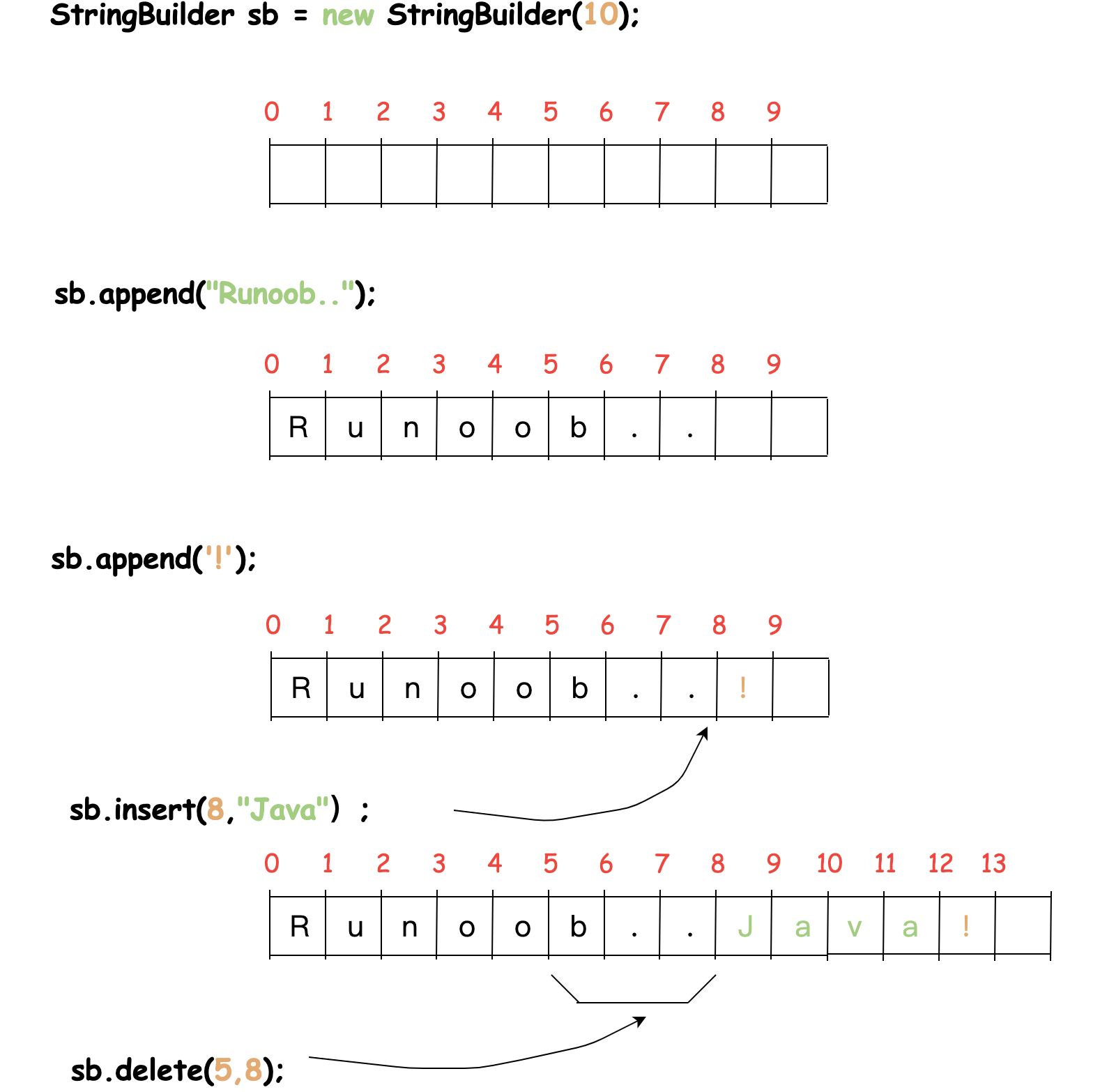远岫出云催薄暮,细风吹雨弄轻阴,梨花欲谢恐难禁。
StringBuffer 类 和 StringBuilder 类
当对字符串进行修改的时候,需要使用 StringBuffer 和 StringBuilder 类。
和 String 类不同的是,StringBuffer 和 StringBuilder 类的对象能够被多次的修改,并且不产生新的未使用对象。
使用 StringBuffer 类时,每次都会对 StringBuffer 对象本身进行操作,而不是生成新的对象,所以如果需要对字符串进行修改推荐使用 StringBuffer。
StringBuilder 类在 Java 5 中被提出,它和 StringBuffer 之间的最大不同在于 StringBuilder 的方法不是线程安全的(不能同步访问)。
由于 StringBuilder 相较于 StringBuffer 有速度优势,所以多数情况下建议使用 StringBuilder 类。
实例
1 | public class RunoobTest{ |

StringBuffer 主要方法
- 以下是 StringBuffer 类支持的主要方法
| 方法 | 描述 |
|---|---|
| public StringBuffer append(String s) | 将指定的字符串追加到此字符序列。 |
| public StringBuffer reverse() | 将此字符序列用其反转形式取代。 |
| public delete(int start, int end) | 移除此序列的子字符串中的字符。 |
| public insert(int offset, int i) | 将 str 参数的字符串插入此序列中。 |
| replace(int start, int end, String str) | 使用给定 String 中的字符替换此序列的子字符串中的字符。 |
StringBuffer 其他方法
- 以下列出了 StringBuffer 类的其他常用方法:
| 方法 | 描述 |
|---|---|
| int capacity() | 返回当前容量。 |
| char charAt(int index) | 返回此序列中指定索引处的 char 值。 |
| void ensureCapacity(int minimumCapacity) | 确保容量至少等于指定的最小值。 |
| void getChars(int srcBegin, int srcEnd, char[] dst, int dstBegin) | 将字符从此序列复制到目标字符数组 dst。 |
| int indexOf(String str) | 从指定的索引处开始,返回第一次出现的指定子字符串在该字符串中的索引。 |
| int lastIndexOf(String str) | 返回最右边出现的指定子字符串在此字符串中的索引。 |
| int lastIndexOf(String str, int fromIndex) | 返回 String 对象中子字符串最后出现的位置。 |
| int length() | 返回长度(字符数)。 |
| void setCharAt(int index, char ch) | 将给定索引处的字符设置为 ch。 |
| void setLength(int newLength) | 设置字符序列的长度。| |
| CharSequence subSequence(int start, int end) | 返回一个新的字符序列,该字符序列是此序列的子序列。 |
| String substring(int start) | 返回一个新的 String,它包含此序列当前所包含的字符子序列。 |
| String toString() | 返回此序列中数据的字符串表示形式。 |